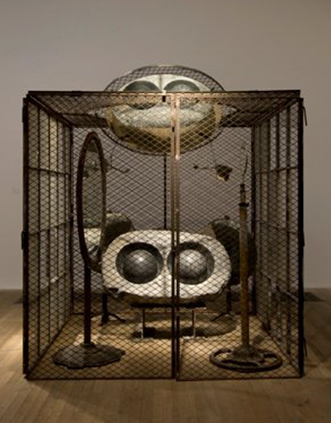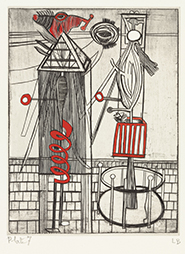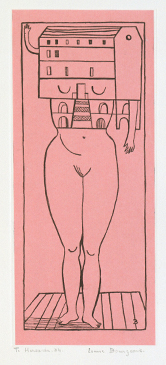





Architecture

Side by Side
1989-2003

Who, Where, When, Why, What
1999-2008
The architecture of New York City had an immediate impact on Louise Bourgeois when she arrived from France in 1938, newly married to American art historian Robert Goldwater. Her first print, a holiday greeting card for that year, shows fragments of both her new home and the Paris she left behind. New York’s skyscrapers also underlie the visual narratives that unfold in her celebrated illustrated book He Disappeared into Complete Silence, of 1947. She said, “My skyscrapers reflect a human condition,” and here they became personifications of loneliness, alienation, anger, and hostility. At that time, Bourgeois also created her Femme Maison, depicting a female body topped by a house. It became a feminist icon and was later issued as a print.
The architectural forms in Bourgeois’s early paintings and prints evolved into totem-like wood figures for her sculptural debut in the late 1940s. Dwellings of one form or another became ongoing motifs—from organically shaped plaster lairs in the 1960s to room-scale enclosures called Cells that dominated the later years. All these works are sites of personal dramas, where Bourgeois gave symbolic form to her vivid memories and powerful emotions. She even meticulously re-created particular buildings in marble—for example, her childhood home in Choisy-le-Roi, France, and New York’s Institute of Fine Arts, where her husband worked—placing them in assembled environments. For Bourgeois, who had initially trained in mathematics, architecture offered order, structure, and stability for tumultuous states of mind.

Side by Side
1989-2003

Who, Where, When, Why, What
1999-2008
“You pile up associations the way you pile up bricks. Memory itself is a form of architecture.”